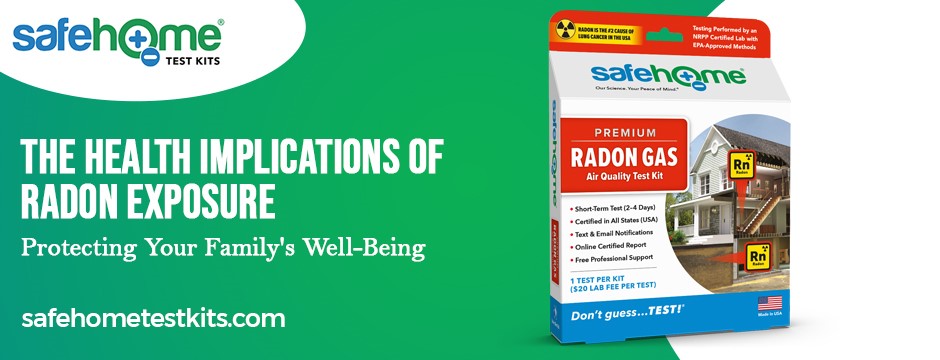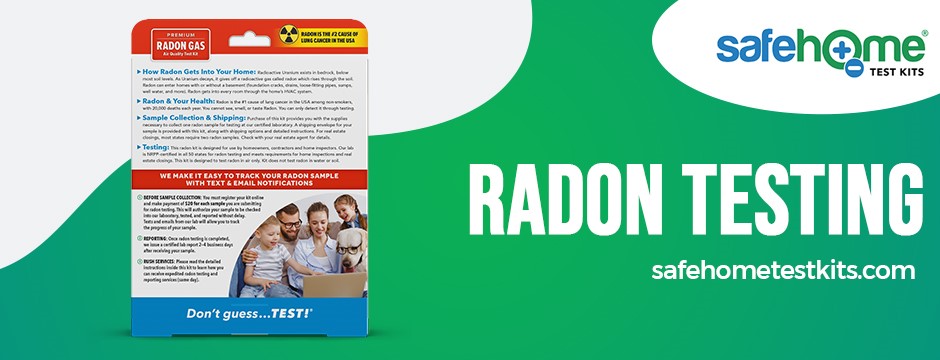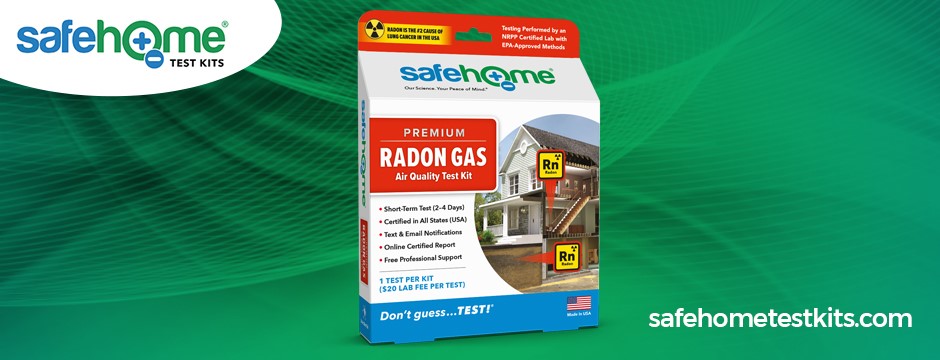The Health Implications of Radon Exposure: Protecting Your Family's Well-Being

One often overlooked but significant threat to indoor air quality is radon gas. This colorless, odorless, and tasteless radioactive gas can seep into homes, exposing occupants to potentially serious health risks. Understanding the health implications of radon exposure is crucial for safeguarding your family’s well-being. This comprehensive guide will delve into the various aspects of radon exposure, its health risks, detection methods, preventive measures, and the role of government regulations.
What is Radon Gas, and How Does It Enter Homes?
Radon gas is a byproduct of the natural decay of uranium in soil and rocks. It’s part of the Earth’s natural radioactivity and typically escapes harmlessly into the air. However, it can accumulate to dangerous levels when it enters homes through cracks in the foundation, gaps in walls, and other openings. This gas can become trapped indoors, increasing the risk of prolonged exposure to its harmful effects.
Health Risks of Prolonged Radon Exposure: Understanding the Dangers
The primary health risk associated with radon exposure is lung cancer. Radon decays into radioactive particles that can be inhaled, damaging lung tissue and potentially leading to cancer over time. The World Health Organization (WHO) categorizes radon as a Group 1 carcinogen alongside tobacco smoke and asbestos. Statistics indicate that radon-related lung cancer contributes to many cases and deaths yearly.
Factors Contributing to Radon Exposure and Concentrations
Several factors influence radon levels in homes, including geological characteristics of the area and construction practices. Houses built on soil with higher levels of uranium are more prone to elevated radon concentrations. The building’s design, ventilation, and occupancy patterns also play a role in determining radon levels. Due to the variability of radon concentrations, testing is essential to assess the risk within individual homes.
Detecting Radon Levels: The Importance of Testing
Radon testing is the cornerstone of addressing radon exposure. Testing provides crucial information about indoor radon concentrations and enables homeowners to take appropriate measures if necessary. There are various testing methods available, including short-term and long-term tests. Short-term tests provide quick results over a few days, while long-term tests offer a more comprehensive view over several months.

Preventive Measures and Mitigation Techniques
When radon levels exceed safe limits, mitigation is essential to reduce exposure risks. Standard mitigation techniques include sub-slab depressurization, which involves installing a ventilation system to redirect radon gas away from the home’s interior. Sealing cracks and openings in the foundation can also minimize radon entry. Professional radon mitigation services offer expertise in identifying and implementing the most effective solutions.
Steps to Protect Your Family's Well-Being
Safeguarding your family from radon exposure requires a systematic approach:
- Awareness: Understanding the dangers of radon exposure is the first step. Being informed empowers you to take necessary precautions.
- Testing: Conduct regular radon testing to assess indoor concentrations. Testing kits are readily available and provide valuable insights into potential risks.
- Interpretation: Once you receive your test results, understand what they mean regarding radon concentrations. Safe levels are crucial for long-term health.
- Mitigation: If elevated radon levels are detected, consult professionals to develop a mitigation strategy tailored to your home’s characteristics.
- Prevention: Consider radon-resistant construction techniques to prevent future exposure during new home construction or renovations.
The Role of Government and Regulations
Governments and regulatory bodies recognize the importance of addressing radon exposure. Many regions have established guidelines and regulations for radon testing and mitigation in residential buildings. These regulations aim to protect occupants and ensure safer living conditions. Staying informed about local laws is crucial when buying, selling, or renovating a home.
Spreading Awareness: Educating Others about Radon Exposure
Raising awareness about radon exposure extends beyond your household. Sharing information with friends, family, and the community helps create a collective effort to combat this silent threat. Online resources, community seminars, and local health departments can provide valuable information and tools to educate others about the risks of radon exposure and the importance of testing.
Detect and Address Radon with Safe Home® Radon Test Kits
In the pursuit of keeping your family safe from the hidden threat of radon gas, Safe Home® provides an invaluable resource: radon test kits tailored for your convenience and peace of mind. Our air quality test kits are meticulously designed to detect radon levels accurately and efficiently. With a commitment to safety, our kits include all the necessary supplies for seamless sample collection, secure shipping, and meticulous testing performed by our NRPP-certified lab. By adhering to EPA-approved methods, Safe Home® ensures the reliability and accuracy of your radon test results.
Safe Home®: Your Trusted Partner in Radon Testing
Regarding radon testing, the quality of the testing lab is crucial. Safe Home‘s lab holds NRPP certification in all 50 states for radon testing, a testament to our commitment to excellence and adherence to industry standards. This certification reflects our expertise and positions us as a trusted partner for homeowners, contractors, and home inspectors alike. Our certification meets the requirements for critical situations such as home inspections, mortgage loan approvals, and real estate closings, providing comprehensive support throughout your journey to a safer and healthier home.

Incorporating Safe Home’s radon test kits into your wellness strategy empowers you to take informed action against radon exposure. You’re investing in your family’s health and security by leveraging our expertise, resources, and commitment to accurate testing. With Safe Home®, you’re not only detecting radon levels but actively contributing to a safer living environment for you and your loved ones.
Prioritizing Family Health through Radon Awareness
Radon exposure might be invisible, but its effects are not. Understanding the health implications of radon exposure is vital for ensuring your family’s well-being. By grasping how radon enters homes, the health risks it poses, and the methods to detect and mitigate it, you’re taking proactive steps to protect your loved ones. Whether through DIY testing or professional services, staying informed and vigilant against radon exposure is critical to creating a safe and healthy living environment. Remember, your actions today can have a lasting impact on your family’s health and future.


